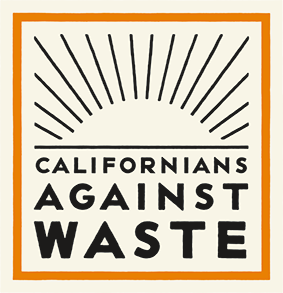Stopping the Rising Tide of Marine Debris Pollution
The world's oceans are being filled with materials that take hundreds to thousands of years to decompose and the problem will only grow worse if action is not taken.
In August 2013, the NRDC estimated that local California communities spend over $428 million each year to keep marine debris from polluting our waters--an average of $10.71 per resident.
60-80% of marine debris overall and up to 90% of floating debris is plastic. Furthermore, 80% of marine debris is estimated to be land-sourced, mostly from urban runoff, like the trash pictured here in the L.A. River. This marine debris rides ocean currents that can take it across the globe, as evidenced by the beach debris on remote Pacific Atolls. As plastic is broken down by the sun it joins the great mass of plastic particles in our oceans.
This marine debris presents a danger to marine wildlife. This incredible mass of plastic has grave implications for marine wildlife, including filter feeders such as whales. According to the CCC, more than 1 million seabirds, 100,000 marine mammals, and countless fish have died annually in the north Pacific from ingesting or becoming entangled in marine debris.
Furthermore, due to their chemical composition plastic particles collect toxins on their surface which can harm the reproductive health of animals that consume them. Furthermore, marine debris is a drag on local governments, which are mandated to clean it up. The problem is especially great in areas that have been deemed US EPA impaired waterways, and thus must meet Total Maximum Daily Loads for trash, such as the Los Angeles River. Southern California cities alone have spent hundreds of millions on meeting TMDL requirements, and the clean-up costs of marine debris as a whole may well push the $1 billion mark, according to the California Ocean Protection Council.
Addressing these and other concerns, the California Ocean Protection Council adopted a comprehensive set of resolutions last year that set calendar deadlines for the implementation of several marine-reduction goals, such as the expansion of the CRV and the reduction of single-use takeout food packaging.
The California Ocean Protection Council
The California Ocean Protection Council (OPC) has called on legislators and local governments to adopt measures to reduce plastic marine debris pollution. Starting with its resolution on marine debris in 2007 and most recently with its 2008 implementation plan, the OPC has called for:
- Inclusion of commonly-littered items into an EPR model like California's Container Recycling Law ("Bottle Bill" / "CRV").
- Putting a fee on plastic bags and banning polystyrene.
- Phasing out toxics in plastic packaging.
Marine Debris Studies:
- NRDC Annual Cost to CA Communities to Reduce Litter in Waterways (2013)
- Algalita Plastic Debris Report (2007)
- Algalita/California Coastal Commission Plastic Marine Debris Policy Study (2006)
- Columbia University Marine Debris Study (2005)
- US EPA Marine Debris Study (2002)
- Ocean Conservancy/US EPA Marine Debris Study (2007)
- United Nations Marine Debris Study (2005)
- West Coast Governor's Agreement on Ocean Health Draft (2007)
Additional Marine Debris Links:
- Algalita Marine Research Foundation
- BestLife Article: Plastic Ocean
- California Ocean Protection Council
- California Coastal Commission
- Heal the Bay
- Heal the Bay Marine Debris Factsheet
- LA Times article on marine debris; multimedia presentation.
- NOAA Marine Debris Program
- Plastic Debris Rivers to Sea Project
- SF Chronicle Article on marine debris
- United Nations Site on Marine Debris
- West Coast Governor's Agreement on Ocean Health


